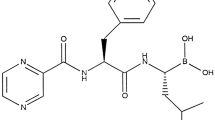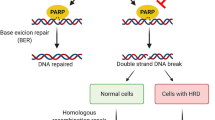Abstract
Aldophosphamide thiazolidine (NSC 613060) and aldophosphamide perhydrothiazine (NSC 612567), which hydrolyse spontaneously to 4-hydroxycyclophosphamide (4-OH-CP) in aqueous solution, were synthesised. These substances are prototypes of a new class of prodrugs for activated oxazaphosphorines. They were developed according to our hypothesis on the mechanism of action of oxazaphosphorine cytostatics. According to this hypothesis, toxicity and canceroselectivity are the results of phosphoramide mustard (PAM) release from 4-OH-CP catalysed by two classes of phosphodiesterase. 4-OH-CP toxicity results (a) from oxazaphosphorine-specific toxicity due to reactivity of the hemiaminal group with thiol groups of membrane proteins and (b) from PAM release catalysed by ubiquitous phosphodiesterases present in blood and tissues. Specific cytotoxicity suitable for antitumour therapy is based on specific PAM release in the vicinity of the target molecule DNA by the exonuclease subsites of DNA polymerases δ and ɛ. To unfold this specific core, which, we assume, improves efficacy in cancer treatment, low, long-lasting concentrations of OH-CP have to be guaranteed beneath the affinity range of the ubiquitous phosphodiesterase. This goal is facilitated by the rapid transfer of 4-OH-CP released from the perhyrothiazine derivative NSC 612567 to protein SH groups, as shown by protein-binding studies. Half-lives of hydrolysis and dissociation constants of the thiazolidine and perhydrothiazine derivatives, in which the reactivity of the hemiaminal group is inactivated by inclusion into the thiazolidine or perhydrothiazine ring, were determined to be 23 h and 6.0 × 10−6 mol/l for NSC 613060 and 1.5 h and 1.1 × 10−4 mol/l for NSC 312567. Accordingly the compounds guarantee low but long-lasting steady-state concentrations of 4-OH-CP. The acute toxicity determined in mice was 2400 mg/kg for NSC 613060 and 1900 mg/kg for NSC 612567. Except for a 30% decrease in leucocytes, daily i.p. injections of 260 mg/kg NSC 612567 (15% of LD50) were tolerated without signs of toxicity over a period of 4 weeks. In contrast, equitoxic doses of cyclophosphamide caused severe signs of toxicity; only five daily applications were tolerated. In mice treated repeatedly with NSC 613060, oxazaphosphorine toxicity was overlapped by thiazolidine toxicity. Scheduled activity tests in mice bearing P815 ascites tumour showed optimal therapeutic response when mice were treated daily. Repeated applications of 4% LD50 of NSC 613060 and 13% LD50 of NSC 612567 prevented tumour growth in mice with advanced, P388 lymphomas, implanted subcutaneously, without signs of overall toxicity to the host.
Similar content being viewed by others
Author information
Authors and Affiliations
Additional information
Received: 10 April 1997 / Accepted: 21 August 1997
Rights and permissions
About this article
Cite this article
Voelcker, G., Bielicki, L. & Hohorst, HJ. Thiazolidinyl- and perhydrothiazinylphosphamidesters: toxicity and preliminary antitumour evaluation. J Cancer Res Clin Oncol 123, 623–631 (1997). https://doi.org/10.1007/s004320050116
Issue Date:
DOI: https://doi.org/10.1007/s004320050116




